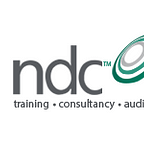The Five Stages of a Successful ISO 27001 Audit
Understanding the ISO 27001 Audit
The ISO 27001 standard boasts of a comprehensive and reliable set of control objectives that help companies manufacture products by following an auditing process. The ISMS provides a brilliant framework for the legal, physical and technical policies and procedures. These systems come in handy while laying out processes for information risk management.
As per the ISO 27001 standard, there is a particular planning process that includes several features. Some of these include the following:-
- Definition of a security policy
- Laying out the scope of Information Security Management System
- Conducting a prior risk assessment
- Mitigation of the risks identified
- Choosing and selecting the appropriate control objectives and their implementation
- Preparation of statement of applicability and other reports
The processes mentioned above cover the ISO 27001 certification and renders auditors with a technical plan to ensure quality products. The certification leverages an ISO 27001 software that comprises a checklist of control protocols utilized by the certification bodies.
The Five Phases of a Successful ISO 27001 Audit
The world of ISO 27001 certification forms an essential list of internal audits that need to be part of the corporational scheme of things. Given the variety of control objectives that a typical ISO 27001 standard has, the certification providers have created a process that ensures that the implementation of ISO 27001 is a success.
Here are the list of different stages that constitute a successful and efficient ISO 27001 certification:-
- Phase 1 = Scoping and Pre-Auditing Survey
Companies that go forth with an ISO 27001 software need to conduct a risk-based analysis that sheds light on the main objectives of this audit and provides information about the controls that fall out of the audit’s scope. It’s the prime duty of the organizational managers to make the audit’s scope consistent with the ISMS policies.
Auditors, while performing the pre-auditing survey, need to recognize the prime stakeholders, associates, and third parties to request documentation for their reveal during the auditing process.
There are several information sources for developing a robust audit; these include- industry-based researches, ISMS utilized in the past and previous policies and other documents.
- Phase 2 = Planning and Preparation of Audits
The second phase includes devising a workable action plan for the ISMS audit, as per its timing and resourcing of the audit agreed upon by the corporate management. Under the ISO 27001 certification audit planning, the boundaries for the same are identified and enlist the checkpoints.
The several checkpoints of the ISO 27001 standard offer detailed information about the interim updates that need to be provided to managers. These updates allow auditors to think about the issues that are concerning the auditing processes and their management.
- Phase 3 = Moving onto the Field Work
This is the action phase of ISO 27001 certification which involves interviewing staff personnel, stakeholders and managers that form a part of information system management systems. It also includes the review of ISMS documents, handouts, data sources and other additional information.
The results drawn from the fieldwork phase are essential for specific audit testing and their relevance with ISMS documentation with ISO 27001 standards.
- Phase 4 = Performing Analysis
Post the fieldwork, auditing evidence needs to be filtered, sorted, and constantly reviewed as per the risks mitigated and the separate control objectives.
Furthermore, the auditing analysis may be used to identify the loopholes within the evidence generated and the need for performing more testing.
- Phase 5 = Reporting and Documentation
The final step of the auditing process revolves around generating reports for the results achieved. Reports need to be designed for each of the findings, the evidence accumulated and the ISMS data that has been generated.
The managers and C-level executives need to look for pathways to constantly enhance the audit’s processes and document its results simultaneously.
ISO 27001 Certification Completes a Full-Circle
The ISO 27001 certification is the bonafide license for a particular information security management system (ISMS). The reasons behind the development of the ISO 27001 audit was to offer a model for the establishment, implementation, operation, surveillance, review and maintenance to improve and refine an already existing information security management system.
